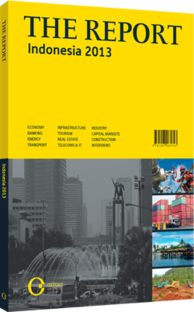Going online: E-commerce should benefit from the rise in internet user numbers
In the past, booking travel and hotels in Indonesia often involved face-to-face or over-the-telephone interaction, followed by a fax, and sometimes a visit to several different counters in an airline or travel agent office. Now, however, this process is being revolutionised by the growth of e-commerce, a retail method that opens up major possibilities for the tourism sector, which will help circumvent some of the challenges placed by a sometimes substandard infrastructure. E-commerce is also taking off on the back of the country’s impressive economic growth and the resultant expansion of an online-savvy, wealthier middle class.
CRUNCHING THE NUMBERS: According to an August 2012 survey undertaken by Veritrans, Indonesia’s leading online payments service, and DailySocial, a tech media and research company focusing on Indonesia, in 2011 the country had some 55m internet users. This was out of a population of 245m, giving a penetration rate of 22.4%, with a median population age of 28 years and a per-capita GDP of $3495.
This internet penetration rate is low in comparison to peers elsewhere in the ASEAN region, with the rate in Thailand, for example, at 31%, and Vietnam at 56%. Some 71% of Indonesians also access the internet from laptops or desktops, 63% of the time from home. Approximately 24% of Indonesians used smartphones to go online, with around 25% of users spending more than 30 hours per week online – similar to the figures for Malaysia and the Philippines, but less than Singapore or Vietnam. When Indonesians do go online, the most popular activity is social media, while on their phones, chatting still outranks e-mail.
Given this profile, the researchers found that e-commerce still takes a relatively small amount of business. In 2011 the survey concluded that Indonesian e-commerce users spent an average $256 annually making online purchases, with only around 6.5% of the total Indonesian population falling into this category. This made the total e-commerce market worth $900m – around 0.7% of total annual retail sales in Indonesia.
While this is a small figure, there are some factors that have been switching on light bulbs for many in the tourism sector. The survey also found that the second-most-popular retail category for e-commerce users – following fashion items – was travel booking.
EXPANDING THE BASE: Given historical trends, the survey predicted in the next four to five years internet usage is likely to triple, with broadband penetration going from 2% in 2011 to 30% by 2015, while the middle class would rise from around 110m to 150m people over the same period. Credit card usage is also on the increase, making online payment processes easier. The e-commerce market, the survey concluded, would likely expand from around $1bn to $10bn by 2015.
As a result, companies that invest in e-commerce now are likely to see dramatic growth in the next few years. Travel and tourist sites in particular are also well-placed to take advantage of their profile as an online service. According to Billy Andrian, an investment officer at Alternative Media Group (AMG), “In other countries, such as Singapore and China, we have seen that the first e-commerce trend is always towards travel.”
ONLINE BOOKING: AMG believes the years ahead will see a shift away from traditional travel agents to online booking, largely due to the convenience of websites. In addition, travel agents can incur additional overhead, and there is a higher risk of fraud when payments in cash are made. Online booking allows for greater flexibility and – a major consideration in a traffic-congested city such as Jakarta – a whole holiday can be booked from the comfort of your home or office.
One challenge, however, may be in spreading internet connectivity to tourist areas themselves, ensuring that online bookings can be made with hotels across the archipelago. This requires greater investment in the information technology infrastructure in more remote regions. Yet given that e-commerce spend already averages some $799 in China and $824 in Brazil, Indonesia clearly has enormous potential for growth in this area, with tourism likely a major beneficiary.
You have reached the limit of premium articles you can view for free.
Choose from the options below to purchase print or digital editions of our Reports. You can also purchase a website subscription giving you unlimited access to all of our Reports online for 12 months.
If you have already purchased this Report or have a website subscription, please login to continue.

